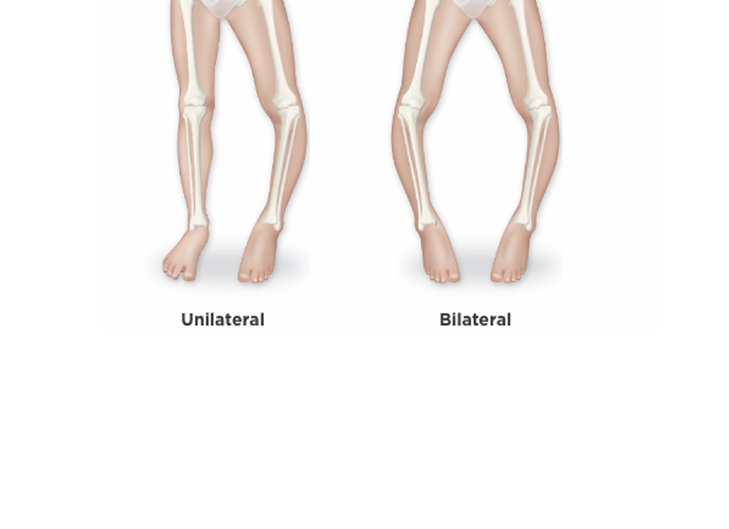Blount’s disease, also known as tibia vara, is a condition in which growth does not occur normally in the growth plates of the lower leg, resulting in deformities that may differ in direction and severity. Severe bowing of the legs can result, causing pain and mobility issues. It is different from physiological bow legs, which tend to straighten as the child grows. Your doctor will be able to tell you which one your child is experiencing.
Blount’s disease causes
The cause of tibia vara is not certain, but it seems to be associated with early walking and above-average weight, and may be caused by the effects of weight on the growth plates. There is a genetic element and some patient groups seem more likely to develop Blount’s Disease.
Blount’s disease symptoms
One or both legs may show bowing, which typically occurs just below the knee and may progress rapidly and unevenly.
Blount’s disease diagnosis
An orthopedic specialist will examine the legs to determine the inward-bending angle and will confirm the diagnosis by performing an X-ray of the knee.
Can Blount’s disease be cured?
In younger children and less severe cases, a corrective leg brace or orthotic may be used to manage the limb deformity. Another option is a minimally invasive orthopedic surgical procedure to insert a guided growth plate system. This inhibits the bone growth on one side of the deformity and allows the opposite side to catch up, straightening the leg.
In more severe deformities, an osteotomy may be required. After osteotomy, either an external or internal fixation device will be used to hold the new bone in place.
What are Blount’s disease or tibia vara complications?
If Blount’s disease is not treated, the symptoms can get worse, causing different leg lengths, pain and trouble walking. The condition can come back after surgery, especially in younger children, who are still growing. An orthopedic specialist can help you determine the right time to perform any surgery.
 Share on facebook
Share on facebook
 Share on twitter
Share on twitter
 Share on linkedin
Share on linkedin
 Share on email
Share on email

